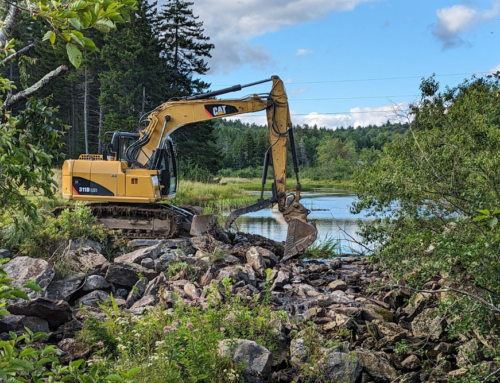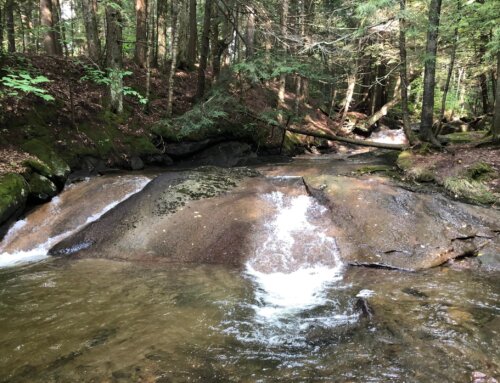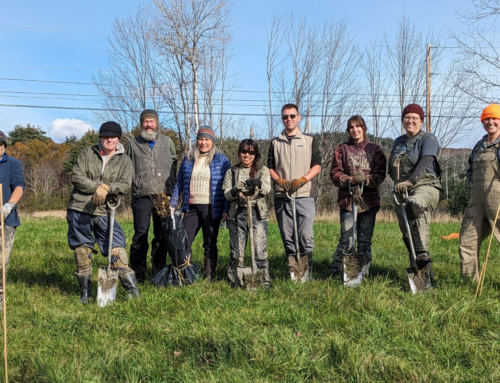European water chestnut (Trapa natans – often referred to simply as Trapa) is an aquatic invasive plant found throughout the Connecticut River basin. If left unchecked, it will take over a water body.
Water chestnut is a problem because it hogs space and nutrients, crowding out other plants and animals. As it decomposes, it decreases dissolved oxygen that fish and other aquatic life need to survive. Water chestnut infestations also impede fishing, hunting, swimming, and boating as the rosettes cover entire bodies of water with plants up to sixteen feet deep, in some extreme cases. Fortunately, it is easily identifiable and smaller infestations can be managed with trained volunteers hand pulling the plant. But water chestnut is tenacious and can outwit half-hearted efforts.
Water chestnut is an annual plant that grows from seed each year. It’s a rooted, floating aquatic plant. It has rosettes of leaves that float on the surface of the water that appear to be radiating from a central point. The leaves are triangular or slightly diamond shaped, toothed on two sides and connected to the stem by a long, flexible submerged stalk. Submerged leaves are feathery and either opposite or alternate. Tiny, white four-petal flowers bloom in July. The seeds are four-horned nut-like structures that mostly develop on the underside of the floating rosette.
If we can prevent it from dropping new seeds, an infestation can be successfully eliminated. But you cannot just pull the plant for a few years and declare victory. Pulling water chestnut before it sets seeds is critical because one seed can produce up to 15 new rosettes, which in turn create 20 or more seeds. And because seeds are viable for up to 12 years, control requires vigilant patrolling and harvesting for many years to ensure a water body is saved.
Learn more about this plant and how you can get involved to help remove it.







